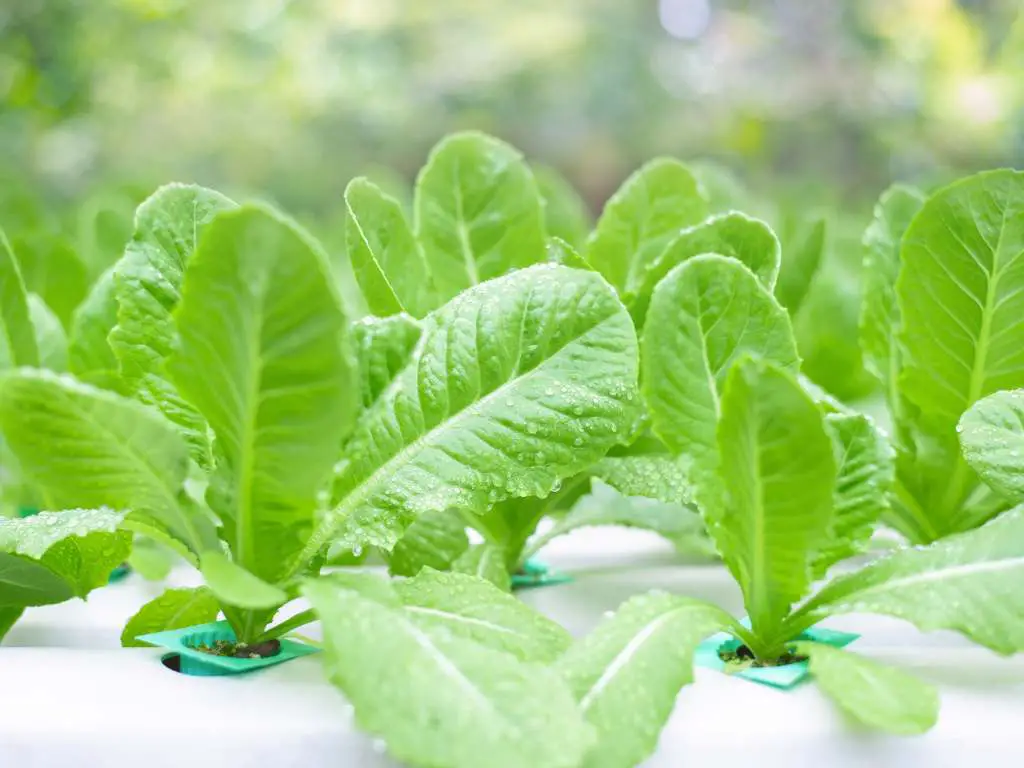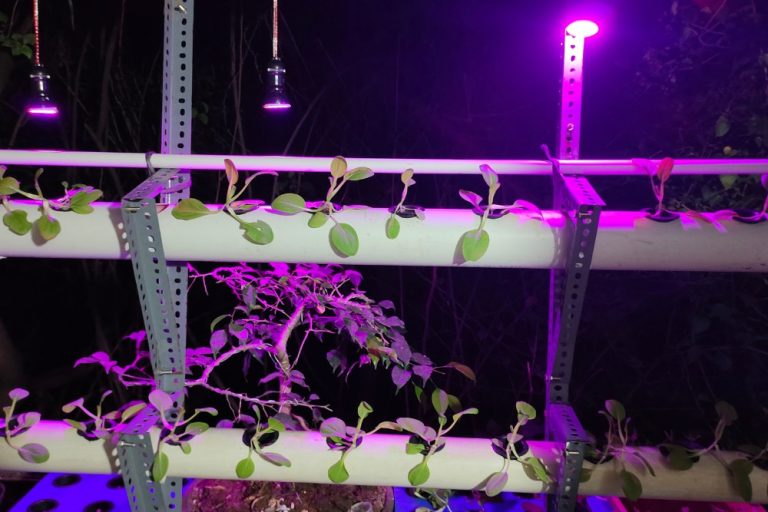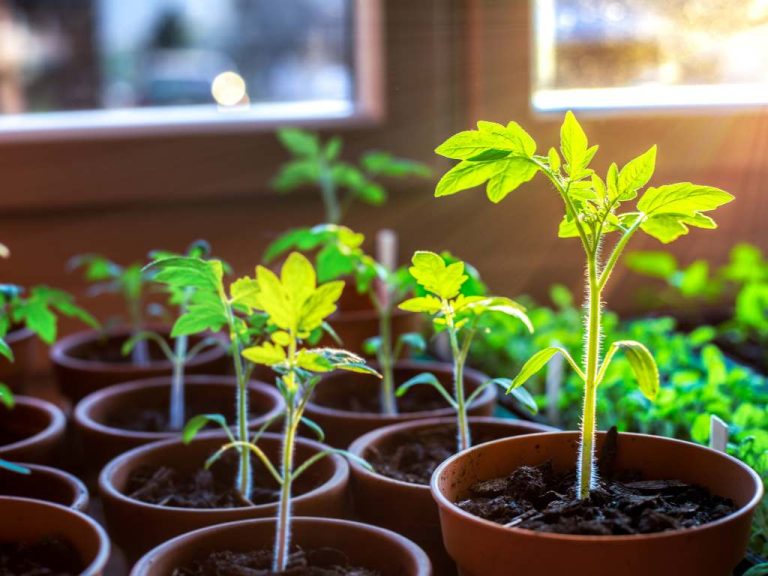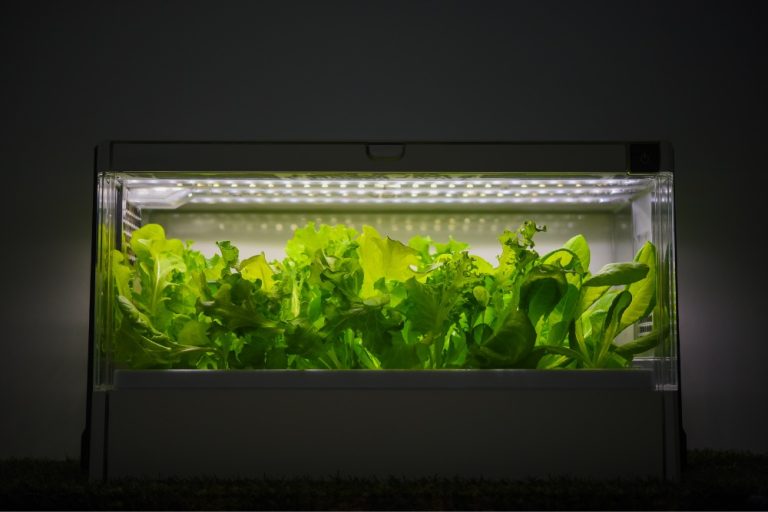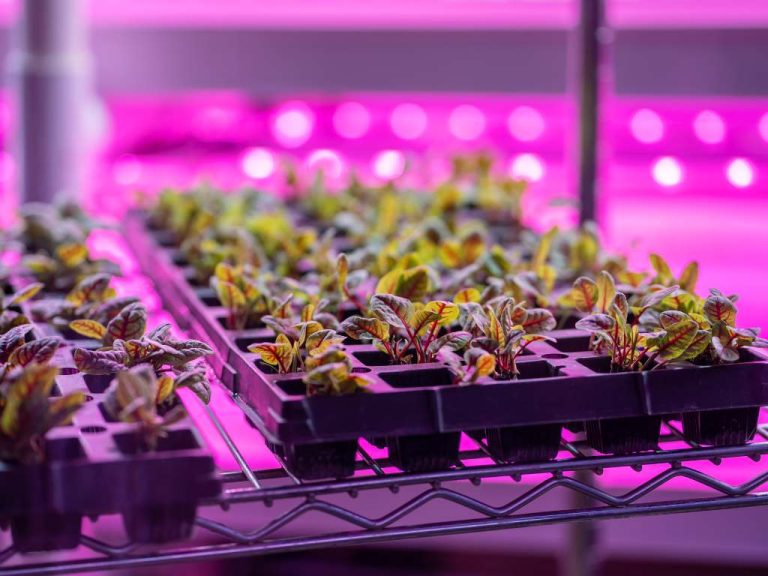Ultimate Guide to Hydroponic Indoor Vegetable Gardening: A Complete Guide
Growing your own vegetables is a rewarding and sustainable practice that not only allows you to enjoy fresh produce but also reduces your environmental impact. However, if you lack a backyard or live in an urban area, traditional gardening may seem like a challenge. That’s where hydroponic indoor vegetable gardening comes in.
Hydroponic gardening is a soil-less method of cultivation that uses a nutrient-rich solution to nourish plants directly. By harnessing this innovative technique, you can create your own indoor vegetable garden and enjoy a bountiful harvest year-round. In this comprehensive guide, I will walk you through the process of setting up your hydroponic system and provide tips for growing vibrant and healthy plants.
Whether you are a novice gardener or have some experience, this guide will equip you with the knowledge and confidence to become a master of hydroponic indoor vegetable gardening. Get ready to embark on a rewarding journey of sustainable and delicious homegrown produce.
- Hydroponic indoor vegetable gardening allows you to grow plants without soil.
- It is a sustainable and innovative method, perfect for those without a backyard or in urban areas.
- Hydroponic systems provide greater control over plant growth and faster growth compared to traditional gardening.
- You can grow a wide variety of vegetables, herbs, and even fruiting plants indoors.
- Proper care and maintenance, including monitoring nutrient levels and pH balance, are essential for the success of your hydroponic garden.
What is Hydroponics Gardening?
Hydroponics gardening is an innovative and sustainable method of growing plants without soil. Instead of relying on traditional soil-based gardening, hydroponics utilizes a nutrient-rich solution to directly nourish the roots of plants.
This allows for greater control over plant growth and eliminates the need for extensive outdoor space. With hydroponics, you can set up your own indoor vegetable garden and enjoy the benefits of fresh produce right at home.
Indoor vegetable garden setup is made easier with hydroponics. By using various systems and techniques, you can create a thriving indoor farming environment. Hydroponics provides a space-efficient solution for growing a wide variety of vegetables, even in urban areas where traditional gardening may be challenging. Whether you have a small apartment or limited outdoor space, hydroponics offers a viable and practical option for cultivating your own vegetables.
Indoor Farming: The Advantages of Hydroponics
Hydroponic gardening offers several advantages over traditional methods. One major benefit is the accelerated plant growth achievable with hydroponics. By directly providing essential nutrients to the roots, plants can grow faster and produce higher yields compared to traditional gardening. Additionally, hydroponics eliminates the risk of soil-borne diseases, reducing the need for harmful pesticides and chemical treatments.
Read – Hydroponics Advantages and Disadvantages
Another advantage of hydroponic indoor vegetable gardening is its versatility. With the right setup and care, you can grow a wide range of vegetables indoors. Leafy greens like lettuce and spinach thrive in hydroponic systems, as do herbs like basil and cilantro. You can even experiment with fruiting plants such as tomatoes and peppers, all within the controlled environment of your indoor garden.
Get Started with Hydroponics

If you’re interested in starting your hydroponic garden, there are a few key steps to follow. First, gather the necessary supplies, which may include a water pump, tubing, nutrient solution, and a growth medium.
Many hydroponic kits are available that contain all the essentials for easy setup. Once you have your supplies, carefully assemble your chosen hydroponic system according to the manufacturer’s instructions.
Next, ensure your plants have access to proper lighting. If natural sunlight is not available, consider investing in grow lights that provide the necessary spectrum for plant growth. Finally, maintain a regular watering and feeding schedule, monitoring nutrient levels, pH balance, and water temperature to keep your plants healthy and thriving.
Benefits of Hydroponic Indoor Vegetable Gardening
Hydroponic indoor vegetable gardening offers incredible benefits for both novice and experienced gardeners. One of the standout advantages is the accelerated growth of plants compared to traditional gardening methods.
With hydroponics, plants receive a balanced supply of nutrients directly to their roots, promoting rapid and healthy growth. This means you can enjoy a bountiful harvest of hydroponic vegetables in a shorter period of time.
Another significant benefit is the higher crop yields that hydroponics allows. By providing plants with optimal conditions for growth, such as the right nutrient balance and controlled environment, you can maximize the productivity of your indoor garden. Additionally, hydroponic systems eliminate the risk of soil-borne diseases, ensuring that your plants remain healthy and vibrant throughout their growing cycle.
Space Efficiency and Versatility
Hydroponic systems are renowned for their space efficiency. Unlike traditional gardening, which requires a large plot of land, hydroponics allows you to grow plants vertically, making the most of limited space. Whether you have a small apartment, balcony, or even just a windowsill, you can set up a hydroponic garden and cultivate an abundance of vegetables.
Furthermore, hydroponics offers unparalleled versatility in plant selection. You can easily grow a wide variety of vegetables, from leafy greens like lettuce and spinach to fruiting plants like tomatoes and cucumbers. This flexibility allows you to diversify your indoor garden and enjoy a range of homegrown produce throughout the year.
Environmentally Friendly and Sustainable
Hydroponic indoor vegetable gardening is a sustainable and environmentally friendly choice. By eliminating the need for soil, hydroponics reduces water usage by up to 90% compared to traditional gardening methods. The closed-loop system also prevents nutrient runoff, reducing the risk of water pollution. Additionally, since hydroponics can be practiced indoors, it eliminates the need for pesticides, further minimizing environmental impact.
With its numerous benefits and the ability to grow fresh vegetables year-round, hydroponic indoor vegetable gardening is an exciting and fulfilling pursuit for any gardening enthusiast. Whether you’re a beginner or a seasoned gardener, hydroponics offers a rewarding and sustainable way to grow your own food.
Choosing the Right Hydroponic System
When it comes to hydroponic gardening, selecting the right system is essential for success. There are various types of hydroponic systems to choose from, each with its own set of advantages and considerations. One popular option is the Nutrient Film Technique (NFT) system, where a thin film of nutrient-rich water flows over the plant roots, providing them with the necessary nutrients.
If you’re looking for a system that requires minimal maintenance, aeroponics is a great choice. This system involves suspending the plant roots in the air and misting them with a nutrient solution. Because the roots are constantly exposed to oxygen, plants can grow faster and healthier.
Another popular system is the drip system, where a timer-controlled pump delivers a nutrient solution to the plant roots through a drip emitter. This system is versatile and suitable for a wide range of plants, making it a favorite among hydroponic gardeners.
Read – Hydroponic Indoor Gardening Techniques
Choosing Wisely for Successful Indoor Gardening
When choosing the right hydroponic system, consider factors such as space availability, the types of plants you want to grow, and your level of experience. Research and gather information about each system’s pros and cons to make an informed decision. By selecting the most suitable system, you’ll set yourself up for a successful and thriving indoor garden.
Exploring Indoor Gardening Ideas
Once you’ve chosen the right hydroponic system, it’s time to get creative with your indoor gardening ideas. Consider the space you have available and the types of plants you want to grow. Leafy greens like lettuce and spinach are popular choices for hydroponic gardens, as are herbs such as basil and parsley. If you have enough space, you can even experiment with growing fruiting plants like tomatoes and cucumbers.
Selecting Suitable Plants for Hydroponic Gardening
When it comes to hydroponic gardening, not all plants are created equal. While the possibilities are endless, it’s important to select the right plants for your indoor vegetable garden. Luckily, there is a wide range of vegetables that thrive in a hydroponic environment.
Leafy greens such as lettuce, spinach, kale, and Swiss chard are excellent choices for hydroponic systems. These greens flourish in nutrient-rich solutions and can provide a continuous harvest throughout the year.
Read – Best Hydroponic Nutrients for Lettuce
In addition to leafy greens, herbs are also ideal for hydroponic gardening. Basil, parsley, cilantro, mint, and chives can all be grown hydroponically. Not only do they add flavor and freshness to your dishes, but they also thrive in water-based systems.
Growing Fruiting Plants Hydroponically
If you’re looking to add some diversity to your hydroponic garden, consider growing fruiting plants. Tomatoes, peppers, strawberries, and cucumbers are all viable options for hydroponic cultivation. These plants require some extra care, especially when it comes to pollination and support structures, but the results can be incredibly rewarding.
Essential Supplies for Hydroponic Gardening
Setting up your own hydroponic garden requires a few essential supplies to ensure successful indoor vegetable cultivation. These supplies will provide you with the necessary tools and resources to create a thriving hydroponic system.
1. Water Pump
A water pump is a critical component of any hydroponic system. It helps circulate the nutrient-rich solution, providing your plants with the essential elements they need to grow. Choose a pump with adjustable flow settings to maintain the ideal nutrient delivery to your plants.
2. Tubing
Tubing is used to transport the nutrient solution from the reservoir to your plants. It should be durable and flexible, allowing for easy installation and maintenance. Consider the size and length of tubing that will work best for your specific hydroponic setup.
3. Nutrient Solution
The nutrient solution provides essential nutrients to your plants in the absence of traditional soil. It is important to choose a high-quality nutrient solution that is specifically formulated for hydroponic gardening. Ensure that it contains all the necessary nutrients for optimal plant growth.
4. Growth Medium
A growth medium is used to support the plant roots and hold them in place. Common options include perlite, vermiculite, coconut coir, and rockwool. Select a growth medium that is appropriate for your chosen hydroponic system and the plants you intend to grow.
By gathering these essential supplies, you will be well-equipped to begin setting up your hydroponic garden. These tools will help you provide your plants with the necessary nutrients and support, allowing them to flourish and thrive in an indoor environment.
Read – How To Make a Low Cost Hydroponic System At Home
Setting Up Your Hydroponic System
Now that you have chosen the perfect hydroponic system and gathered all the necessary supplies, it’s time to set up your indoor vegetable garden. Follow the instructions provided with your chosen system to assemble the components correctly. Whether you’re using a nutrient film technique (NFT), aeroponics, or drip system, make sure each element fits together seamlessly.
As you start assembling your hydroponic system, pay close attention to setting up the water pump, tubing, and reservoir. These components are essential for delivering the nutrient-rich solution to your plants’ roots. Ensure that the tubing is securely connected and that the water pump is functioning correctly to provide adequate circulation.
In addition to assembling the system, it’s crucial to guarantee that your plants have access to proper lighting. Whether you rely on natural sunlight or opt for artificial grow lights, ensure that your plants receive the right intensity and duration of light each day. This will support their growth and development throughout the hydroponic gardening process.
Lighting Considerations
When setting up your indoor vegetable garden, consider the lighting requirements of the specific plants you intend to grow. Different plants have varying light preferences, including the intensity and duration of light exposure. Adjust the positioning and height of your lights accordingly to ensure optimal growth.
Water and Nutrient Management
After setting up your hydroponic system, pay close attention to water and nutrient management. Regularly check the nutrient levels in the reservoir to ensure that your plants are receiving a balanced and appropriate supply. Monitor the pH levels and adjust them as needed to maintain an optimal growing environment.
Additionally, keep track of water temperature to prevent overheating or excessive cooling that may negatively impact plant health. It’s essential to maintain a stable and suitable water temperature to support the overall growth and development of your hydroponic garden.
With your hydroponic system set up, you’re ready to embark on your indoor vegetable gardening journey. The next section will guide you on caring for and maintaining your hydroponic garden to ensure vibrant and healthy plants.
Care and Maintenance of Your Hydroponic Garden
Now that you have set up your hydroponic garden, it’s important to provide proper care and maintenance to ensure the health and vitality of your plants. Here are some essential tips for maintaining your indoor vegetable garden:
1. Monitor Nutrient Levels and pH Balance
Regularly check the nutrient levels in your hydroponic system and adjust accordingly. Nutrient deficiencies or imbalances can affect plant growth and overall health. Similarly, keep a close eye on the pH balance of the nutrient solution. Most hydroponic plants thrive in a pH range of 5.5 to 6.5. Use a pH meter or test kit to monitor and make necessary adjustments.
2. Maintain Proper Watering and Feeding Schedule
Establish a consistent watering and feeding schedule for your plants. Unlike traditional soil-based gardening, hydroponic systems require regular nutrients and hydration. Depending on the specific needs of your plants, you may need to adjust the frequency and duration of watering. Be sure to provide sufficient water and nutrients to support optimal growth.
3. Check for Pests and Diseases
Periodically inspect your plants for any signs of pests or diseases. Common pests in hydroponic systems include aphids, whiteflies, and spider mites. If you notice any infestation, take immediate action to prevent it from spreading. Use organic or chemical-free pest control methods to protect your plants. Additionally, maintain a clean and sterile growing environment to minimize the risk of diseases.
4. Regular Maintenance of Equipment
Ensure that all components of your hydroponic system are functioning properly. Regularly clean and sanitize your system to prevent the buildup of algae, bacteria, and other contaminants. Check for any clogs or leaks in the tubing and replace any worn-out parts. By maintaining your equipment, you can optimize the performance of your hydroponic garden and extend its lifespan.
Troubleshooting Common Issues in Hydroponic Gardening
When it comes to hydroponic gardening, it’s important to be prepared for the occasional hiccup. Like any form of gardening, hydroponics can come with its share of challenges. But fear not, with a little troubleshooting, you can address these issues and keep your indoor vegetable garden thriving.
One common issue in hydroponic gardening is nutrient deficiencies or imbalances. Since plants receive their nutrients from the nutrient solution, it’s crucial to ensure that it contains the right balance of essential elements. Regularly monitor your nutrient levels and adjust accordingly to prevent deficiencies or excesses that can hinder plant growth.
Another challenge to watch out for is pH fluctuations. The pH level of your nutrient solution directly affects nutrient availability to the plants. Keep a close eye on this parameter and make any necessary adjustments to maintain a stable pH range. This will help ensure that your plants can absorb nutrients efficiently, resulting in healthy growth.
Root rot is another common problem in hydroponic systems. It occurs when the roots are exposed to excess moisture for extended periods, providing an ideal environment for harmful pathogens. To prevent root rot, maintain proper aeration and drainage in your system, and avoid overwatering. Regularly inspect your plants’ roots for any signs of decay and take immediate action if necessary.
Expanding Your Hydroponic Garden
Now that you have mastered the basics of hydroponic gardening, it’s time to take your indoor vegetable garden to the next level. The possibilities for expansion are endless, allowing you to grow more plants and explore different hydroponic systems.
One way to expand your hydroponic garden is by adding more plants to your existing setup. As you gain confidence and experience, you can experiment with a wider variety of vegetables and herbs. Consider growing different types of leafy greens or venture into fruiting plants like tomatoes or peppers. The key is to select plants that are well-suited for hydroponic systems and align with your preferences and tastes.
If you’re looking for a new challenge, you can also explore different hydroponic systems. While you may have started with a particular system, there are many others to choose from. Each system has its advantages and considerations, so it’s worth researching and trying out new techniques. By expanding your knowledge and skill set, you can further enhance your indoor vegetable garden setup and achieve even better results.
Remember, hydroponic gardening is a continuous learning process. Stay curious and open-minded, and don’t be afraid to experiment. Attend workshops, join online forums, and connect with other hydroponic enthusiasts to exchange ideas and gain inspiration. The more you learn and explore, the more successful and enjoyable your hydroponic gardening journey will be.
FAQ
What is hydroponics gardening?
Hydroponics gardening is the practice of growing plants without soil by using a nutrient-rich solution to provide nourishment directly to the plant’s roots.
What are the benefits of hydroponic indoor vegetable gardening?
Hydroponic indoor vegetable gardening offers faster plant growth, higher crop yields, and reduces the risk of soil-borne diseases. It is also space-efficient and versatile, making it easier to grow a wide variety of vegetables.
How do I choose the right hydroponic system?
There are various types of hydroponic systems to choose from, such as nutrient film technique (NFT), aeroponics, and drip systems. Consider your space requirements and the types of plants you want to grow when selecting a system.
What plants are suitable for hydroponic gardening?
Leafy greens like lettuce, spinach, kale, and Swiss chard, as well as herbs like basil, parsley, cilantro, mint, and chives, thrive in a hydroponic environment. Some fruiting plants like tomatoes, peppers, strawberries, and cucumbers can also be grown hydroponically.
What essential supplies do I need for hydroponic gardening?
You’ll need a water pump, tubing, a nutrient solution, and a growth medium. Many hydroponic kits include all the necessary supplies to get started.
How do I set up my hydroponic system?
Follow the instructions provided with your chosen system to assemble the components correctly. This may involve setting up the water pump, tubing, and reservoir. Ensure your plants have access to proper lighting as well.
How do I care for and maintain my hydroponic garden?
Proper care and maintenance include monitoring nutrient levels, pH balance, and water temperature. Regularly check for pests or diseases and maintain a watering and feeding schedule.
What are common issues in hydroponic gardening and how do I troubleshoot them?
Common issues include nutrient deficiencies or imbalances, pH fluctuations, and root rot. Adjust nutrient solutions, pH levels, and root health as needed. Regular monitoring and attentive care can help prevent and resolve these problems.
How can I expand my hydroponic garden?
You can add more plants or experiment with different hydroponic systems. Continuously learning and exploring new techniques will enhance your hydroponic gardening skills and help you enjoy a thriving indoor garden year-round.
- 29 Bucket Gardening Ideas for a Lush, Compact Garden - October 30, 2024
- 20+ Chic Boho Bedroom Ideas for a Cozy and Stylish Retreat - June 20, 2024
- 12+ Modern Boho Living Room Ideas to Create a Unique Oasis - June 10, 2024

